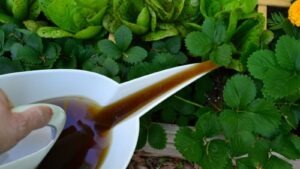The Viral Mint-in-Water Trend Splits Gardeners: Free Herbs or Hidden Harm?

Across social media, it’s the latest green craze-mint sprigs growing roots in water-filled jam jars. For home gardeners, it feels like magic: endless herbs for free. But among nursery owners and plant experts, it’s stirring frustration over plant diseases, falling sales, and blurred ethics. One grower calls it “theft,” while another insists, “it’s just common sense.”
A Simple Hack with Big Reactions
Mint has always been generous. Snip a stem, dip it in water, and within a week, white roots fan out like fine hair. The method is simple, photogenic, and practically foolproof. No wonder timelines are full of sunny window sills lined with glasses of mint, basil, and coriander. It’s a quiet rebellion against expensive herbs and a nod to self-sufficiency.
A student in Leeds showed me his version-three supermarket sprigs rescued from a 69p bunch, perched beside his boiler. “My grandma used to do this,” he said. Two weeks later, he had a mini forest of rooted mint growing in yogurt cups. For many, that first success feels empowering, even joyful.
But what seems like a harmless hack can carry risks. Mint rust, powdery mildew, and viral infections can all spread through water-grown cuttings. What starts as one cheerful glass jar can become a gateway for disease across entire collections. Nurseries, which spend heavily on inspections and sterile propagation, worry that such trends undermine both plant health and business ethics.
How to Do It Right-and What to Avoid
Here’s the clean, proven method. Cut 10–12 cm stems just below a node, strip off the lower leaves, and place them in a clear glass filled so the nodes are submerged. Keep it in bright but indirect light, and change the water every two days. Once roots reach about 3–5 cm, move the cuttings into soil and pinch the tips to encourage bushy growth.
Common mistakes cause most failures: crowding too many stems, letting water stagnate, or using diseased plants. Skipping water changes invites bacterial rot. Dirty scissors can carry spores or viruses from plant to plant. One minute of cleaning with alcohol wipes is enough to save weeks of growth.
The Moral Dilemma Behind the Mint Jar
The real argument isn’t about the method-it’s about manners. Growing from a friend’s cutting or a supermarket bunch is harmless. Sneaking snips from plants at a nursery, however, crosses the line. “It’s stealing, plain and simple,” says a Sussex grower. But others see it differently. A community gardener teaching low-cost propagation said, “This is how people learn to grow. It’s knowledge sharing, not theft.”
What to Watch Before You Root
- Warning signs: Orange blisters (mint rust), fuzzy grey mould (botrytis), or twisted leaves (virus).
- Before you begin: Rinse stems, trim brown ends, sterilise blades, and quarantine new cuttings for 3–4 weeks.
- Good habits: Label jars with date and source, and discard anything that looks infected.
Finding the Balance Between Savings and Sustainability
Independent nurseries rely on sales from common herbs to stay afloat. “Mint pays our early-season wages,” one grower in Norfolk said. Watching visitors snap off “free” cuttings feels like losing more than money-it’s a loss of respect for the craft behind healthy plants.
Still, community growers argue that sharing cuttings helps more people grow their own food and appreciate nature. Often, beginners who start with free mint later buy soil, pots, and new varieties from local shops. That cycle can benefit everyone if built on honesty and care.
Healthy Compromise for Home Gardeners
Mint will keep rooting in jam jars no matter who wins the debate. The best approach is to enjoy the simplicity of water propagation while practising good hygiene and respecting sources. Ask before taking. Support small nurseries that keep rare or disease-free varieties alive.
If you’re just starting out, go ahead-try the trick, watch those roots form, and enjoy the satisfaction of growing something from almost nothing. If you’re experienced, share disease-free cuttings responsibly with neighbours or a local garden group. And if you run a nursery, consider setting up a small “free cutting” corner-it might turn would-be sneaks into loyal customers.
Key Points for Growers
- Mint roots easily in water: 10–12 cm stems, nodes submerged, roots appear in 7–14 days.
- Clean habits prevent trouble: Sterilise tools, change water regularly, and isolate new plants.
- Ethics matter: Always ask before taking cuttings, and support your local growers.
FAQ
Does water-propagated mint taste the same as store-bought?
Yes. The flavour depends on the variety and how it’s grown, not on the propagation method.
How long can mint stay in water?
Pot it when roots reach 3–5 cm. Leaving it too long weakens the roots.
Can you grow mint from supermarket bunches?
Often yes. Choose fresh, green stems, trim below a node, and place them in clean water. Discard any that look slimy or spotted.
Is taking a cutting from a nursery plant legal?
Not without permission. Most shops are happy to help if you ask.
What diseases should I look out for?
Watch for mint rust, powdery mildew, botrytis, or viral mottling. Isolate and discard infected cuttings immediately.







